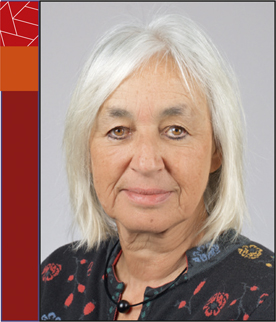Helena Van Swygenhoven-Moens will present The Fred Kavli Distinguished Lectureship in Materials Science on Tuesday, April 23. She is a professor at the École Polytechnique Fédérale de Lausanne (EPFL) in the Materials Science Institute; she also leads the Neutrons and X-rays for Mechanics of Materials Laboratory and heads the Photons for Engineering and Manufacturing Research Group at the Paul Scherrer Institute in Switzerland.

Helena’s presentation is titled, “Synchrotron Light to Investigate Materials In Operando.” Synchrotron radiation beams are now sufficiently bright and detectors are sufficiently fast that scattering and x-ray absorption data can be followed in real time for a material under action. With the use of synchrotron radiation, high-resolution computer-aided tomographic microscopy is possible. One can now look at the formation of pores, microcracks, or gas bubbles during the interaction of a material with an external environment.
Helena studied physics at the Vrije Universiteit Brussels and received her PhD degree in physics from the Central Jury in Belgium. After a professional break for motherhood, she continued her career with a Marie-Heim Vögtlin Grant from the Swiss National Science Foundation. Helena is a Fellow of the Materials Research Society, elected member of the Royal Academy of Science of Belgium, and an advanced grant holder from the European Research Council. For many years, she chaired the International Board of the International Committee of Strength of Materials, was a member of the Scientific Advisory Committee of the European Spallation Source, was on the peer review panel of Diamond, and was on the beamline review panels of ESRF. Helena also serves on the engineering expert panel of the National Science Foundation Flanders and on expert panels of the ERC.
The core of her work is the development and use of in situ experiments at synchrotron and neutron facilities, with the aim to follow a material’s microstructure in operando and to provide synergies between experiments and computational modeling. Helena’s research focuses on the link between synthesis and microstructure, including laser-based additive manufacturing methods and the connection between microstructure and mechanical behavior of a variety of materials, ranging from nanostructured materials for watch components, superelastic alloys for medical applications, and advanced steels and lightweight alloys for structural applications. Through her ERC advanced grant (MULTIAX), Helena addresses non-proportional multiaxial straining covering the gap between our current knowledge of mechanical behavior derived from uniaxial deformation tests and the engineering reality of applications and processing routes.


